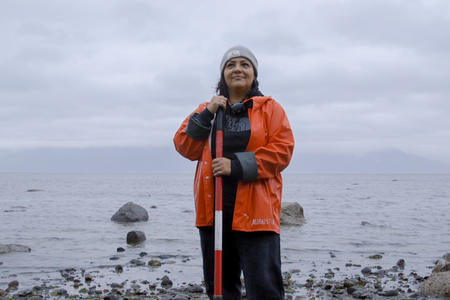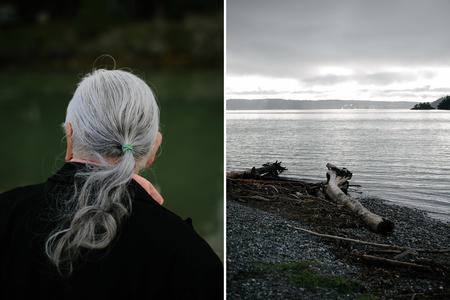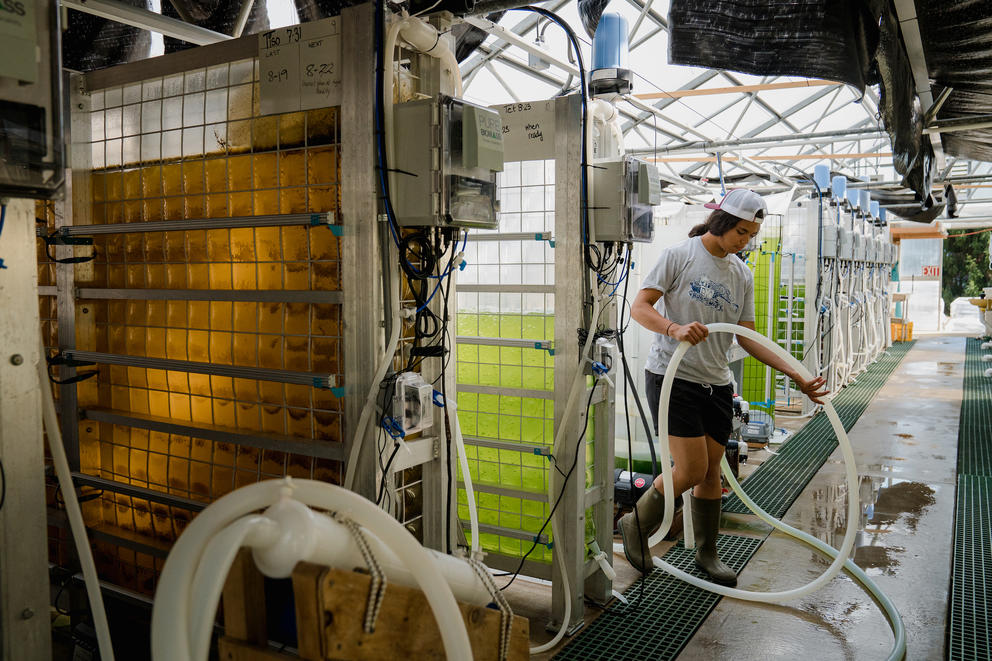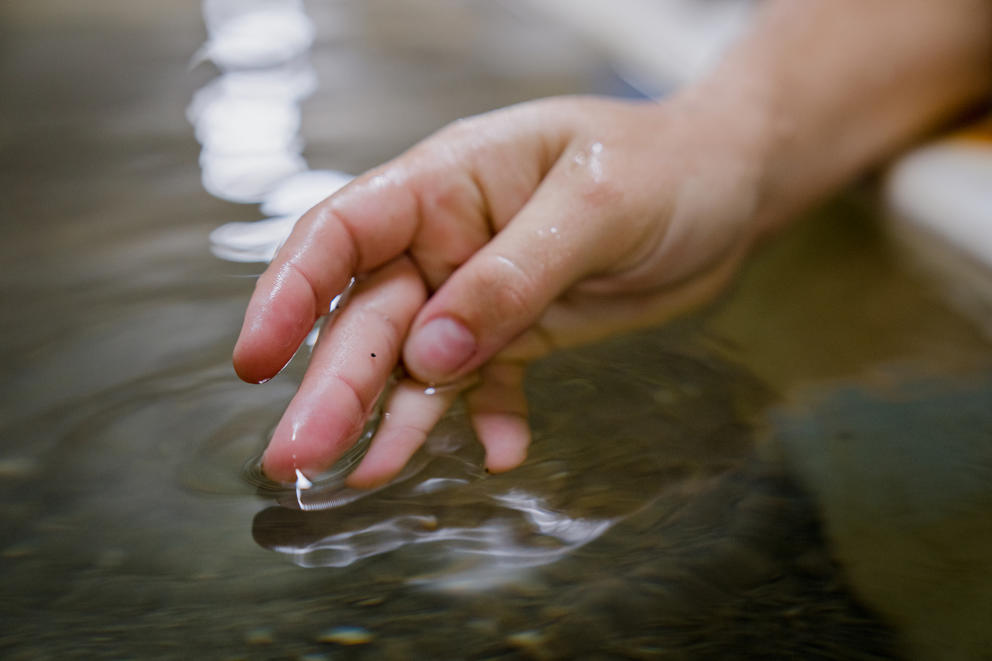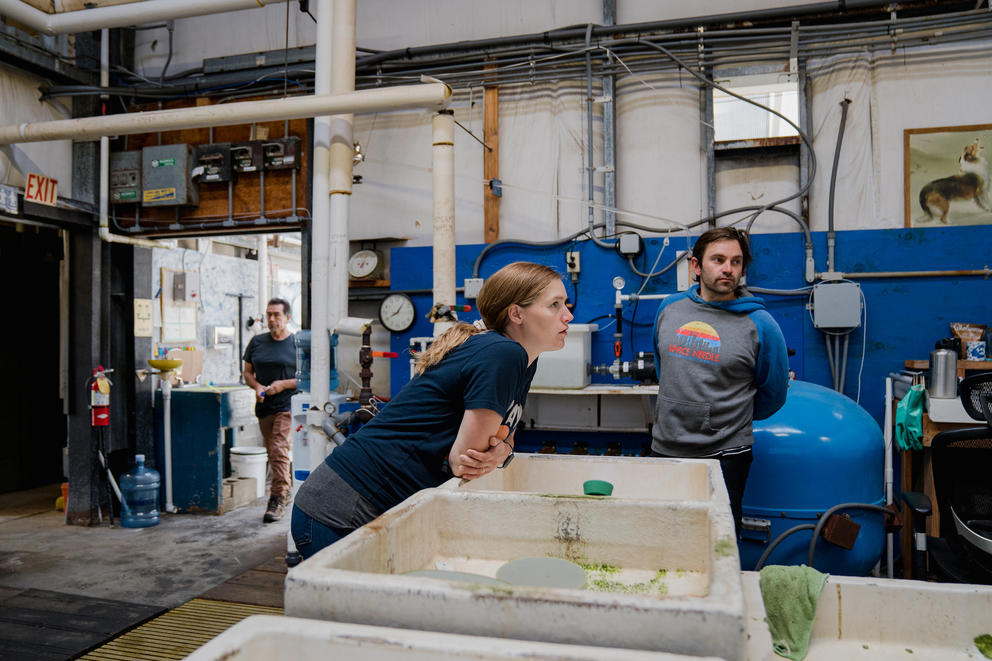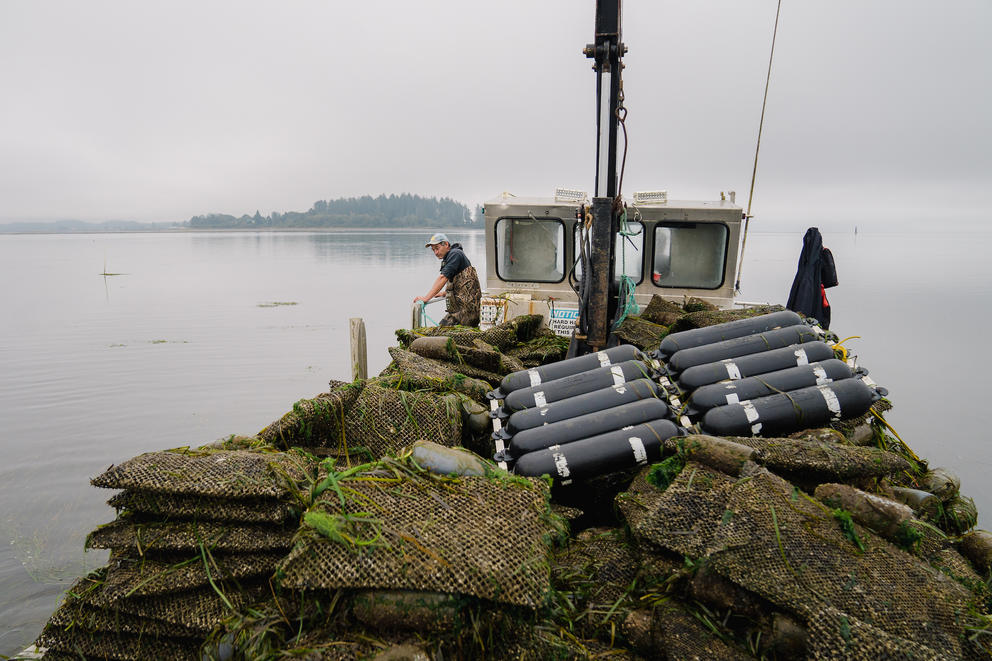This article is part of Western Work, a High Country News series produced in collaboration with The Guardian. Read the series here.
The job would be difficult anywhere, but it’s particularly taxing in Washington. Here, wintertime low tides — when shellfish are harvested — occur in the middle of the night. This means that farmers like Cordero are out at midnight, in the freezing cold, in January.
Like many of the 600-plus workers at Taylor, the nation’s largest producer of farmed shellfish, Cordero started when he was young. The physicality of the job is part of why the company’s workforce leans youthful. But there’s also the appeal of working outdoors, in scenic coastal Washington, and for an industry known for its sustainability. Solid, if unspectacular, pay has been a pull, too; even entry-level jobs can reach far above minimum wage.
It used to be that the company could fill a job opening within a few weeks. Now, amid a remarkably tight labor market, that process can take four months. Taylor is struggling to find technicians to grow oyster larvae, as well as farmers like Cordero. Last summer, the company’s workforce was a third slimmer than it was four years ago.
Part of that is COVID-19. Taylor slashed its workforce when demand for shellfish fell. When it tried to rehire workers, many didn’t come back: they left the industry, or the region, or the workforce entirely. Shellfish farming, which has never appealed to everyone, now seems even less attractive.
That may be because, in some respects, the job is getting harder. Summer is the busiest season for shellfish farming — and climate change is making summers hotter. In 2021, during a weeklong “heat dome,” temperatures in the region reached nearly 120 degrees, instead of the usual 70s and 80s. That impacted Taylor’s hatchery in Quilcene, Washington, on the Puget Sound side of the Olympic Peninsula, where workers raise baby shellfish.
During the heat dome, hatchery workers came in at 3 a.m. to protect the nascent shellfish — and themselves — from the worst of the heat. They moved the animals from warm, shallow water to deeper, colder water. They skipped maintenance, so that the shellfish wouldn’t be exposed to high temperatures. Despite their best efforts, some of the carefully curated algae that feed baby shellfish died. The extreme conditions also sparked a massive oyster die-off, both at farms and in the wild. At Taylor, workers put in extra hours to sort the dead oysters from the living.
Given the unpredictable spawns, algae blooms and changing water pH levels — not to mention the heat — there is an overwhelming sense of precarity, even for Taylor, a company that’s more than a century old.
The living condition of the workers are becoming more unstable, too.
Back in 2017, Trump administration officials exerted a significant immigration crackdown around Bay Center, where Cordero works. Dozens were arrested. The shellfish workforce, which skews heavily Latino, was hollowed out. Many left the region; some left the country entirely.
Those who stayed are finding life increasingly difficult. During the pandemic, city dwellers flocked to Washington’s coast. In tiny Bay Center, a place that rented for $800 a month a few years back now goes for $1,200. Around Quilcene, the site of Taylor’s hatchery, houses that used to be rentals were sold. The rentals that do remain now go for $2,000 or $3,000 a month, not the $1,000 pre-pandemic price. One Taylor worker who lives in Port Townsend, a trendy town of about 10,000 people, pays $1,600 a month for a two-bedroom apartment.
The housing crunch has worsened the worker shortage, with applicants turning down jobs because they can’t find a place to live. “They look at the paycheck and they look at how much rent costs around here, and it’s really challenging,” said Molly Jackson, the Quilcene hatchery manager. One woman Jackson recently hired parked her RV at the hatchery for three months until she found a more permanent place.
Jackson now scrolls through Facebook and Craigslist and calls friends to help would-be employees find housing. Taylor even briefly considered buying land in Quilcene for employee-owned tiny houses. In part because of high housing costs, the company raised starting wages — rates now range from $16.50 to $27 an hour, depending on the position — on top of health and dental care and a 401k matching plan.
Taylor is also changing how the work itself is done. It has turned some of the hatchery’s more onerous and time-consuming tasks — flipping screens that hold baby oysters in water tanks, for example — over to machines. The company sees mechanization as a win/win: a way to keep production up even with a significantly smaller workforce, while also making work easier for the remaining employees. Maybe, the company hopes, this will entice workers to stick around a bit longer.
That might be true of Ramiro Cordero. For most of his 25-year career, he harvested oysters one by one, straight from the water, a tiresome task that required long hours and repeated bending. Now, instead of growing oysters on the seafloor, Taylor plants them in bags, some of which hang off the sides of boats. When the oysters are ready, a machine hoists them up, and workers pluck them from eye level, no bending required.
The task is still outdoors, in the rain or sun, in increasingly extreme weather. But a harvest that used to take one week can now take just a few hours, and it’s far less backbreaking. Another Bay Center farmer, who had been considering retirement, now thinks he can hold on for another few years.
But he will retire eventually, as will Cordero. And it’s not yet clear whether Taylor’s higher wages or assistance finding housing will be enough to draw new employees. Although Taylor has hired nearly 100 new people in the last year, at Bay Center, there’s still a 40% vacancy rate.
Ricardo Morales, one of Cordero’s colleagues, said he doesn’t mind the long hours in the pouring rain, although he added that come “October, November, December, you’ll be wishing that you took that job at McDonald’s or Dairy Queen instead.” He loves working outside and doesn’t think he’ll ever leave the industry. Many of his friends and family have, though, pulled by a $20-an-hour starting wage in logging, or pushed by the immigration crackdowns.
I asked Morales how the industry had changed in the decades he’s worked in it. He looked at the four men around him, standing in the middle of a large empty warehouse in Bay Center, and didn’t hesitate. “There are fewer people,” he said. “A lot of people have just left.”
This story was produced for High Country News on Oct. 3, 2022 and is republished here with permission.


